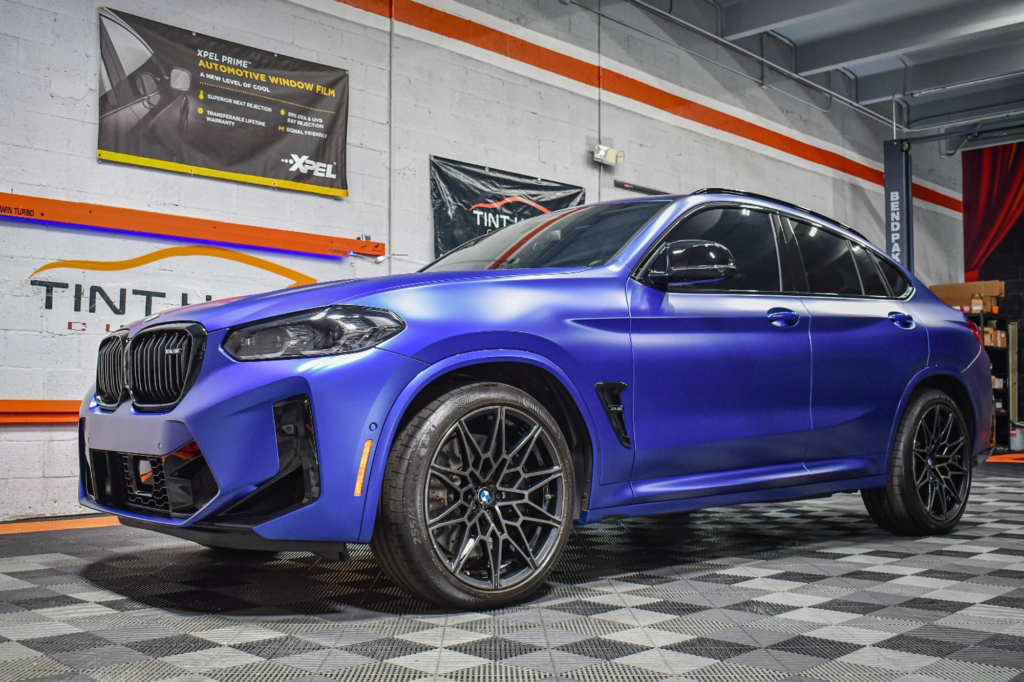If you’re tired of your car’s color, consider Florida vinyl wrapping as an alternative to repainting. This process involves applying customizable vinyl sheets to your car’s exterior, which not only transforms its look but also shields it against scratches and UV rays. As a bonus, it’s usually more cost-effective than a full repaint job and easily reversible, preserving your car’s original paint. The wraps come in various colors and finishes and can even feature custom designs. If the idea of giving your vehicle a no-damage, affordable makeover interests you, you’re just a few more scrolls away from a complete guide.
Key Takeaways
- Car wrapping is a cost-effective alternative to repainting, allowing color and design customization.
- Vinyl wraps preserve the original paint, enhancing your vehicle’s resale value.
- With finishes like matte, gloss, and metallic, you can achieve any aesthetic you desire.
- The wrap installation process is quick, typically taking between one and five days.
- Regular maintenance can prolong the wrap’s lifespan and protect it from scratches, UV rays, and other damage.
Understanding Car Wrapping
While you might be familiar with the traditional method of repainting a car to change its color, there’s an alternative that offers greater flexibility and creativity: car wrapping.
Car wrapping involves applying a large vinyl sheet to your vehicle’s exterior. This sheet can be customized to a color of your choice or even display intricate designs and textures.
You may wonder how this process works. First, professionals meticulously clean your vehicle to guarantee the vinyl adheres properly. Then, they apply the vinyl wrap, using heat to stretch the material over the car’s angles and curves.
It’s a detailed and careful process that guarantees the wrap fits your car like a second skin.
But don’t confuse car wrapping with a paint job. Unlike paint, vinyl wrap Florida is non-permanent and reversible. If you decide you want your old color back or fancy another change, you can simply have the wrap removed.
Wrapping your car gives you the freedom to change its style without any long-term commitment. So, if you’re itching for a change but don’t want to repaint, car wrapping could be your ideal solution.
Benefits of Vinyl Wraps
Beyond the flexibility and reversibility that vinyl wraps offer, they also carry several other benefits that make them an attractive alternative to repainting.
Vinyl wraps are cost-effective. Compared to a full repaint job, they are more budget-friendly. This makes them a great choice if you’re looking to refresh your car’s look without draining your wallet.
Another key advantage of vinyl wrap services Florida is the protection they provide. They act as a shield for your car’s original paint, preserving its resale value and protecting it from scratches, UV rays, and minor chips. It’s like giving your vehicle an extra layer of armor.
Don’t forget about customization. Your vehicle can become a canvas for your creativity with the wide variety of colors, finishes, and custom graphics that wraps offer.
Plus, the process is quick. Wrapping your car takes only a fraction of the time compared to repainting, which means you’ll be back on the road with your stylishly protected car in no time.
Selecting the Ideal Wrap
Once you’ve decided to go with a vinyl wrap, choosing the right one can seem challenging, given the endless array of options. Yet, it’s essential to select a wrap that aligns with your taste and vehicle’s style.
Firstly, the finish is key. You can opt for matte, gloss, satin, metallic, or even carbon fiber finishes. Matte and satin lend a modern, sleek look, while gloss and metallic make a bold statement. Carbon fiber, on the other hand, adds a touch of sportiness.
Next, consider the color. The spectrum is wide, from vibrant reds to subtle greys. You can stick with a classic shade or experiment with something more unique, like a color-shifting wrap.
Remember graphics. Want a simple, clean look? Opt for a solid color. If you’re looking for something more eye-catching, go for a custom design or pattern.
Lastly, it’s not just about aesthetics. Quality matters, too. Opt for high-grade vinyl to guarantee durability and longevity.

Step-by-Step Wrapping Process
Before diving into the world of car wraps, it’s important to understand the process involved. Initially, your car’s surface is thoroughly cleaned to remove any dust or debris. Any imperfections, such as scratches or chips, are smoothed over as they could cause the wrap to bubble or peel.
Next, the vinyl wrap is carefully measured and cut to fit your car’s dimensions. It’s then heated to make it more pliable and easier to work with. The wrap is applied gradually, starting from one end of your car and moving to the other, using a squeegee to smooth it out and guarantee there are no air bubbles.
This process requires patience and precision to avoid wrinkles and to guarantee the wrap adheres properly to your car’s surface. The edges are then trimmed and sealed, and the wrap is heated once more to secure it in place.
The entire process can take anywhere from one to five days, depending on the complexity of the design and the size of your car.
Maintenance and Care Tips
Now that you have a vinyl wrap adorning your vehicle, maintaining its freshness and vibrancy is the next step. It’s easier than you might think, but it still requires some attention.
First things first, wash your car regularly. This will keep the wrap clean and bright. Don’t use high-pressure washers, though, as they can potentially damage and peel your wrap. Opt instead for a soft cloth and mild detergent.
Secondly, avoid parking in direct sunlight for extended periods. UV rays can fade the color of your wrap over time. Seek shade when possible, or consider investing in a UV-protective spray to add an extra layer of defense against the sun’s harsh rays.
Additionally, be mindful of any scratches or damage. Small tears can expand if not addressed promptly. If you notice any wear and tear, it’s best to consult a professional for repairs rather than attempting a DIY fix.
Lastly, avoid harsh chemicals and abrasives. They can compromise the integrity of your wrap, leading to discoloration and a less-than-perfect finish. Stick with products specifically designed for vinyl wrap care.
Unwrapping and Reverting Changes
Although your car’s vinyl wrap can last for several years, there might come a time when you’d like to restore the original paint job or change to a new wrap.
Unwrapping your vehicle isn’t as intimidating as it might seem. It’s a process that should be done carefully to avoid damaging the paint underneath, but with patience and the right tools, it can be done efficiently.
When you decide to remove your wrap, it’s best to do so within the wrap’s lifespan, typically between five to seven years. Waiting too long can make the process more difficult, as the wrap may start to break down and leave residue on your car’s surface.
To unwrap your car, slowly heat a small area of the wrap with a heat gun or hairdryer, then carefully peel the vinyl away.
If residue remains, you can clean it off with a mild adhesive remover. Always remember, though, that if you’re unsure or uncomfortable doing this yourself, it’s perfectly okay to enlist the help of professionals.
They’ve the expertise to guarantee the removal process is done correctly and without damaging your car’s paint.
In Summary
So, you’re ready to shake things up and give your car a fresh, new look. Vinyl wrapping offers you an affordable, reversible alternative to traditional repainting. Remember to choose a quality wrap, follow the right installation process, and maintain it properly. With the right care, you can enjoy your car’s transformation for years. And if you ever want to switch back, just peel off the wrap. It’s your ride, your style, and your choice. Trust Tint Haus Customs for expert vinyl wrapping services and make your car truly stand out.
